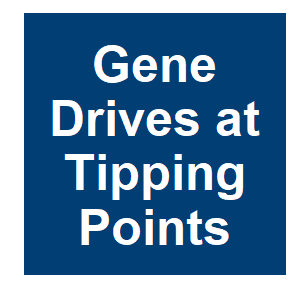Alternative Techniques and Options for Risk Reduction of Gene Drives

|
Bernd Giese, Arnim von Gleich and Johannes L. Frieß,
Gene Drives at Tipping Points,
2020.

Besides great expectations in terms of public health and nature protection gene drives(GD) have raised serious concerns because of their inherent functionality to spread and invade natural populations. Not only does this novel technology pose a paradigm shift for the release of genetically engineered organisms (GMOs) as GDs are intended to spread within wild populations. A released GDGene drive thus represents an unprecedented intervention into the molecular foundation of natural populations, transforming them into GMOs themselves. Once released, it can hardly be retrieved at the current stage of development. The investigations of the potential impacts of GDGene drive-applications are complex and still at the very beginning. Up to now, consequences are not foreseeable in the case of malfunction. Thus, precautionary risk management has to find ways to adequately deal with lacking knowledge up to complete ignorance about potential adverse effects. Three main options are available for risk management, first, a reduction of exposure by strategies of containment, second, a substitution by socio-technical alternatives that fulfil comparable functions combined with lower exposure and hazard potentials and third an integration of responsible research and innovation in the technological developmentt by choosing potential low risk development paths from the very beginning. In this chapter, we analyse and compare different types of gene drives as well as promising alternative approaches that may provide a reduced risk. More related to this: Alternative strategies for mosquito-borne arbovirus control Genetic control of invasive fish: technological options and its role in integrated pest management Genetic control of invasive fish: technological options and its role in integrated pest management
|



